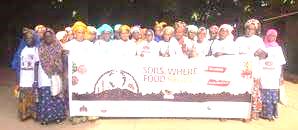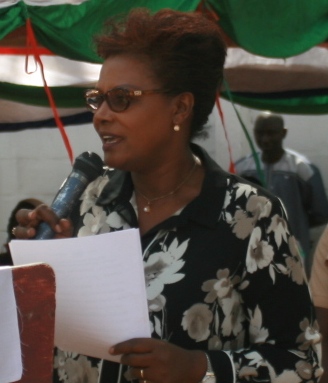By: Momodou Justice Darboe
The Executive Director of the NDMA has said the agency’s ongoing review of its policy and strategy document, its plan to validate the first-ever Disaster Risk Financing Strategy on drought and floods as well as the government’s implementation of drought response in three regions of the country are a clear indication of government’s commitment to protecting vulnerabilities and resilience building.
Stakeholders in the disaster management industry are currently meeting at the Sir Dawda Kairaba Jawara International Conference Centre in Bijilo to review and validate a National Hydro-climatic Risk Management Report (White Paper).
Funded by the West Africa Coastal Areas(WACA) Resilience Investment Project 2(ResIP 2) being implemented by the Ministry of Environment, Climate Change and Natural Resources, the two-day workshop provides the platform for the participants to identify any missing policies and regulatory instruments from the study, review its findings and create a policy memorandum or cabinet paper for executive and legislative consideration for strengthening institutional coordination and policy harmonization on flood and drought risk management.
“I have had time to look at the document to be validated today and found out that as clear as the objectives and outcomes, to me the narrative seemingly missed out certain facts about the country for which I would suggest that we look into those elements to avoid duplication and maximize our meager resources,” NDMA boss Sanna Dahaba stated during the opening ceremony of the two-day engagement on Monday.
“These elements include the fact that The Gambia through the NDMA has a drought contingency plan valid for two years with a final implementation plan that was used in the just concluded ARC cash transfer,” he explained.
“We also have floods standard operation procedures as well as drought through the ARC program.
“Therefore, it would be prudent to revisit some of these elements and documents, particularly the risk profile of The Gambia 2022-2024. This document details the various risks present in the country.”
Mr. Dahaba explained that the government and the World Food Program (WFP) currently have a drought replica program that seeks to protect farmers from drought.
He thanked all the partners for their contributions towards “addressing” floods and drought in The Gambia.
For her part, the World Bank Task Leader, Keren Charles, thanked the NDMA for developing what, she described, as a comprehensive risk management programme.
She recalled the climate-induced disasters that hit The Gambia in the past few years, saying such extreme weather events will continue with the changing climate.
The WB task leader said her institution is currently providing strategic, technical, and financial support to The Gambia through West Africa Coastal Areas (WACA) programmedesigned to increase regional coordination.
The Deputy Permanent Secretary at the Ministry of Environment, Climate Change and Natural Resources, BubacarrZaid Jallow, said it’s well-documented that The Gambia is among 100 countries most impacted by climate change.
He, therefore, expressed the hope that the White Paper will serve as a comprehensive framework for climatic analysis.




